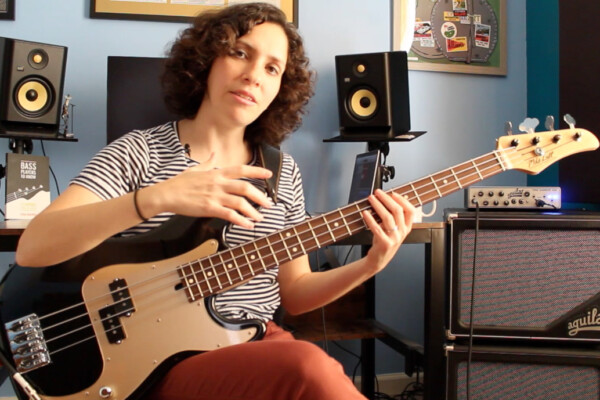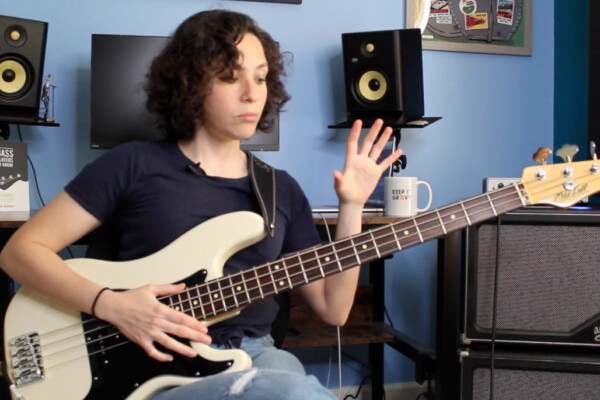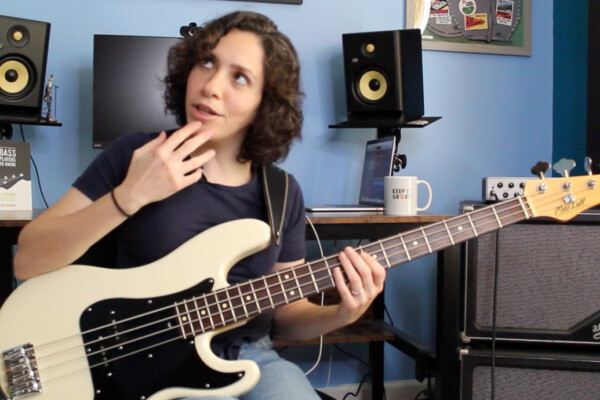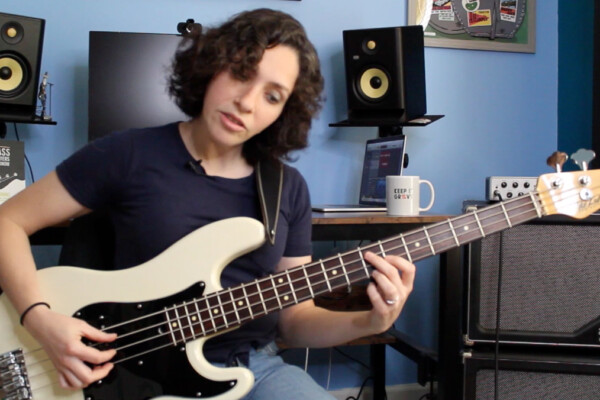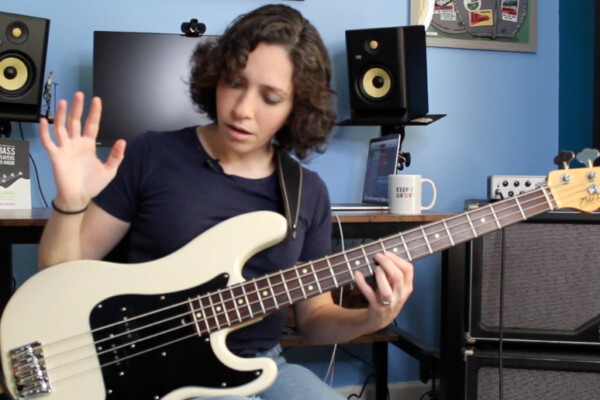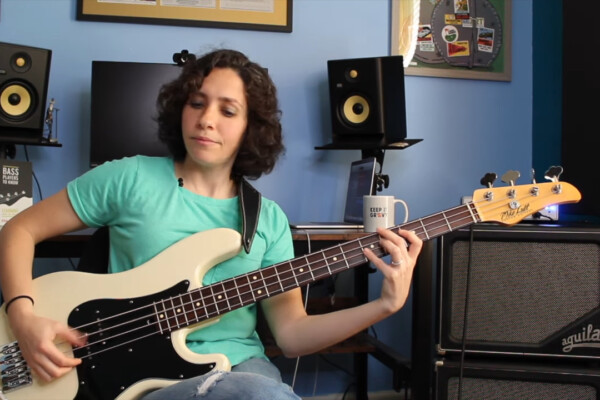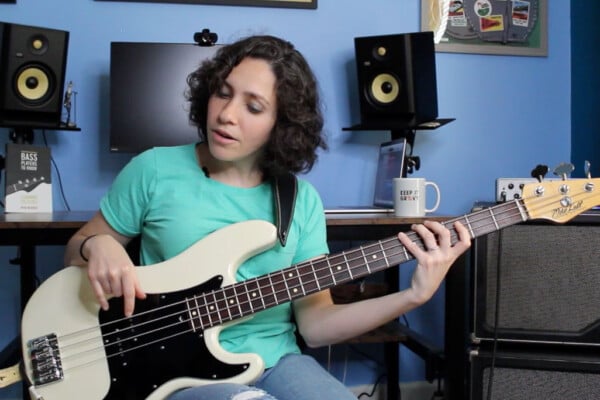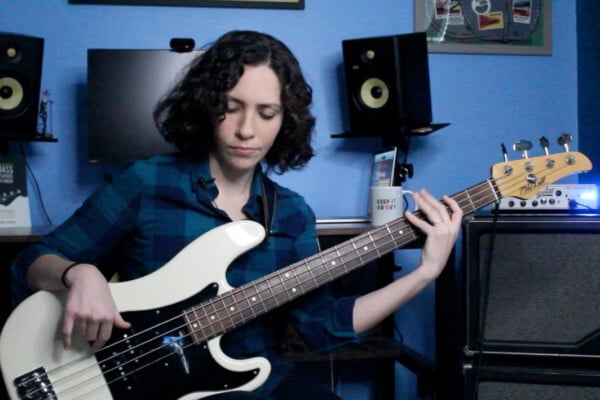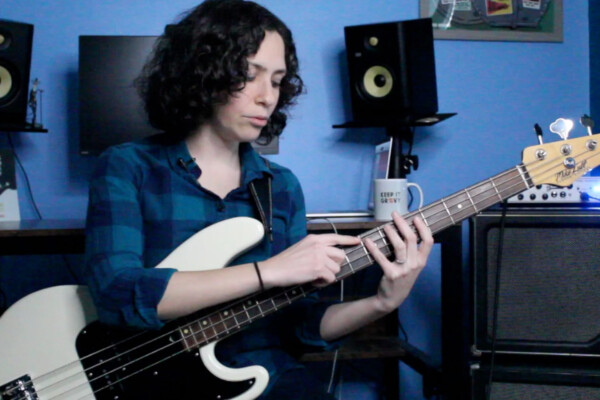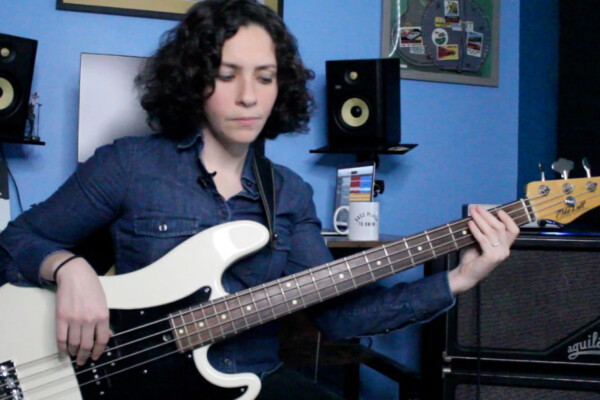Keep It Groovy - Page 3
Learning Arpeggios On The Bass: G Major 2-5-1 Exercise For Major and Minor Triads On Bass
In this “Keep It Groovy” lesson, Ryan Madora guides us through practicing arpeggio shapes by playing through a very common chord progression. It’s the perfect warm-up exercise to play with a metronome and can even be shifted to other keys.
Finding The Best P Bass Tone: Flat vs. Round Wound Strings
In this “Keep It Groovy” bass lesson, Ryan Madora explores the tonal capabilities of the Precision (or “P”) bass. She A-B tests the difference between flat wound and round wound strings along the way.
Learn How To Play Pull-Offs: Essential Funk Bass Technique – Part 2
In Part 2 of this lesson series, we further develop our bass groove with the E minor pentatonic scale and a few built-in moves perfect for pull-offs.
Learn How To Play Pull-Offs: Essential Funk Bass Technique – Part 1
This lesson explores the pull-off technique, an essential element of bass playing. While it’s typically used in funk, this can be applied across all genres of music.
Playing Hammer-Ons on Bass In The Key Of E – Part 2
Here’s a quick follow-up to Ryan Madora’s previous “Keep It Groovy” lesson on hammer-ons in the key of E. Ryan reviews the basics of the technique and then adds a few new funky options to help build our groove.
Playing Hammer-Ons on Bass In The Key Of E – Part 1
In this lesson, Ryan Madora breaks down the technique of hammering-on. A quintessential element of bass technique, this focuses on our fretting hand and adds plenty of groove to any bass line.
Nailing The Bass Intro To “My Girl” By Palm Muting and Getting a Vintage Tone
In this lesson, we’ll learn how to keep it groovy by palm muting and using our thumb — a slightly different technique compared to standard finger-style playing. To practice this, we’ll play the distinctive intro part to “My Girl” by The Temptations.
Keep It Groovy: Learn The Bass Line To The Beatles’ “Eight Days A Week”
Today, Ryan Madora keeps it groovy by learning triads, following a chord progression, and applying a walking bass line by taking a page from Paul McCartney’s book and “Eight Days A Week.”
Keep It Groovy: Using Major and Minor Triads and Making Them Groove: 1-6-2-5 in the key of A
In this “Keep It Groovy” lesson, we take a look at combining our major and minor triad shapes to fit a key and chord progression. We’ll focus on the good ol’ 1-6-2-5 in the key of A.
Keep It Groovy: Learn Minor Triads and Make Them Groove (Key Of A)
In this “Keep It Groovy” lesson, we take a look at minor triad shapes on the bass and figure out how to transform them from an exercise to a groove.
Keep It Groovy: Learn Major Triads and Make Them Groove (Key Of A)
In this “Keep It Groovy” lesson, Ryan Madora takes a look at major triad shapes on the bass and figures out how to transform them from an exercise to a groove.
Keep It Groovy: Using Open Strings: How To Play A Slow Blues In C
Today’s “Keep It Groovy” lesson is all about versatility, understanding the fretboard, and integrating open strings. This one piggybacks off a previous lesson on playing a slow blues. This time, we’ll find the bass part in a different position.

